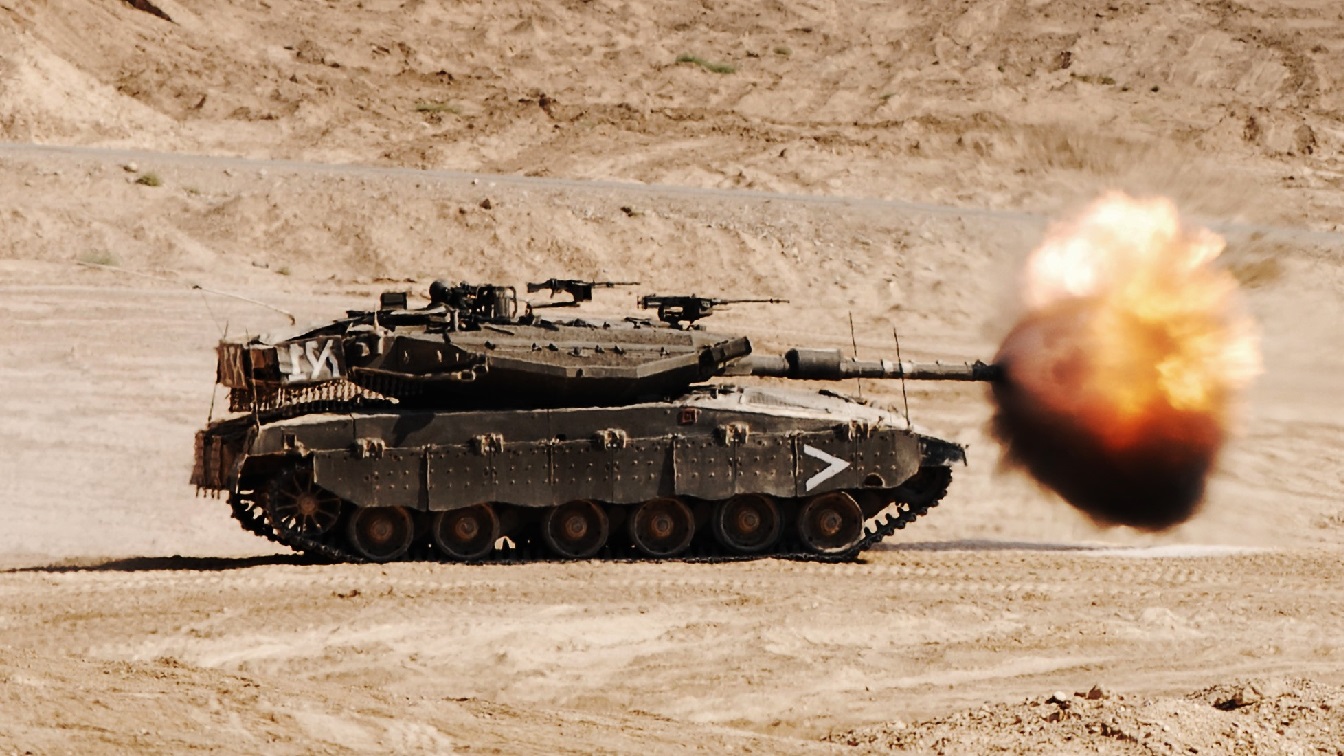Key Points and Summary – A new U.S.-backed peace deal for Gaza is already on shaky ground. While the initial hostage release has succeeded, the critical next phase—disarming Hamas—faces major roadblocks.
-Hamas is already reasserting control with a “reign of terror” against dissidents and has publicly rejected giving up its weapons.
Merkava Tank Israel. Image Credit: Creative Commons.
-The plan’s success is further complicated by the lack of a viable alternative government, as Israel opposes a Palestinian Authority takeover.
-Without a clear, enforceable process for disarmament and a plan to prevent a power vacuum, the current ceasefire is likely to collapse.
As Gaza Ceasefire Begins, Hamas Is Already Reasserting Control
Disarming Hamas is key to the U.S.-backed deal to end the Gaza war.
The first phase of the agreement signed Oct. 9 in Sharm el-Sheikh, Egypt, appeared to begin successfully on Oct. 13, when Hamas released 20 living Israeli hostages.
However, now the deal appears to be hitting some speedbumps. Hamas is re-emerging in Gaza and beginning a reign of terror targeting local dissidents.
It will take time and effort to disarm Hamas and replace it as a governing organization in Gaza.
Hamas Disarmament
For the peace deal to hold, Hamas must not return to being a threat to Israel and the stability of the region. The war Hamas launched on Oct. 7, 2023 became massively destructive, involving Iranian proxies from Lebanon to Yemen.
After two years of war throughout the region, the destruction in Gaza is immense—it will take years to rebuild. There are approximately 2 million people in Gaza, but by the time the area is reconstructed, that number will be higher.
They will need functioning infrastructure and reliable peace to live normal lives. With Hamas in charge of Gaza since 2007, it has not known peace in nearly 20 years. Instead it has been blockaded by Israel, and there have been wars or clashes almost every year.
In an interview with CBS published on Oct. 14, Israeli Prime Minister Benjamin Netanyahu demanded that Hamas fulfill its obligations under the deal and disarm. U.S. President Donald Trump has also said Hamas should disarm, but has appeared to be more flexible about the timeline.
He says a Hamas crackdown in Gaza is currently targeting local gangs. “They did take out a couple of gangs that were very bad…and they killed a number of gang members. That didn’t bother me much, to be honest with you,” he said.
The issue of disarming Hamas is going to hang over Gaza as the deal progresses.
For instance, U.S. Central Command said Oct. 15 that Hamas should “suspend violence” and seize on the historic opportunity for peace by “fully standing down, strictly adhering to President Trump’s 20-point peace plan and disarming without delay.” Will this prod Hamas to begin to accept the deal and disarm? Even if Hamas wanted to disarm, how would it go about doing so?
No Power Vacuums
There are multiple layers to the challenge of disarmament. First, there needs to be a ready alternative security force in Gaza. Having various militias and clans vying for power is not in the interest of Gaza. It’s worth recalling that Hamas didn’t launch the October 7 attack by itself—it worked with other terrorist groups, such as Palestinian Islamic Jihad.
Disarming Hamas, then, is just one part of removing arms from extremists in Gaza; there are other groups waiting to step into a power vacuum.
Another challenge of disarmament is verifying and defining it. Hamas began the October 7 war with tens of thousands of rockets and missiles. It had 24 battalions of men, with large numbers of RPGs and other munitions. Although Hamas has lost many fighters, it still has many more.
Does disarmament mean that it lays down its heavy weapons but keeps some of its rifles and handguns?
Even if it did hand over heavier weapons and rockets, who would verify the process is complete? Hamas doesn’t appear likely to give these weapons to Israel. A security force capable of receiving the weapons seems to be needed.
Another challenge is the need to provide civilians in Gaza with an environment free of Hamas’ influence. During the two years of war, Israel didn’t attempt to cordon off an area where civilians could abide freely—a difference from other successful wars against terrorist and insurgent groups.
For instance, when fighting against ISIS in Mosul, the Iraqi army systematically pushed ISIS out of the city and enabled Iraqi civilians to move into temporary camps, and later return to their homes. During the two years of war in Gaza, civilians were asked to evacuate into areas controlled by Hamas, essentially cementing the group’s power.
Israel opposes giving the West Bank-governing Palestinian Authority control over Gaza. The Palestinian Authority has generally kept terrorist groups such as Hamas in check in the West Bank, where they are largely disarmed. But Israeli authorities don’t see that as a model for Gaza.
Yet aside from Hamas, there is no other group that has the authority or credibility to rule
Regional Buy-In
Disarmament is both a practical issue of collecting weapons and a process of reducing armed forces and moving them away from civilians. When it works, it means that a group lays down its arms and limits its activities to politics; or that the group disbands.
This has happened in some places, such as Northern Ireland after the peace deal in the late 1990s. However, in other places, the process has not been quick. For instance, the Kurdistan Workers Party is supposed to be disarming, but has only performed a token ceremony of burning some arms.
The road toward peace and stability in Gaza is going to be long.
If the goal is to prevent Hamas from returning to rule Gaza and rebuilding its arsenal, a clear process will need to be put in place to disarm it. This will require a lot of buy-in from regional countries, as well as the U.S. and Israel.
About the Author: Seth Frantzman
Seth Frantzman is the author of The October 7 War: Israel’s Battle for Security in Gaza (2024) and an adjunct fellow at The Foundation for Defense of Democracies. He is a Senior Middle East Analyst for The Jerusalem Post. Seth is now a National Security Journal Contributing Editor.
More Military
The U.S. Army’s Big M10 Booker ‘Light Tank’ Mistake Still Stings
The U.S. Navy Built Two Versions of the Littoral Combat Ship. Both Were a Mess.
The EA-18G Growler Has A Message for the U.S. Navy
Warship Goes Down Below the Waves: Navy F/A-18F Fighter Fires A Stealth Munition
First Appeared on
Source link













